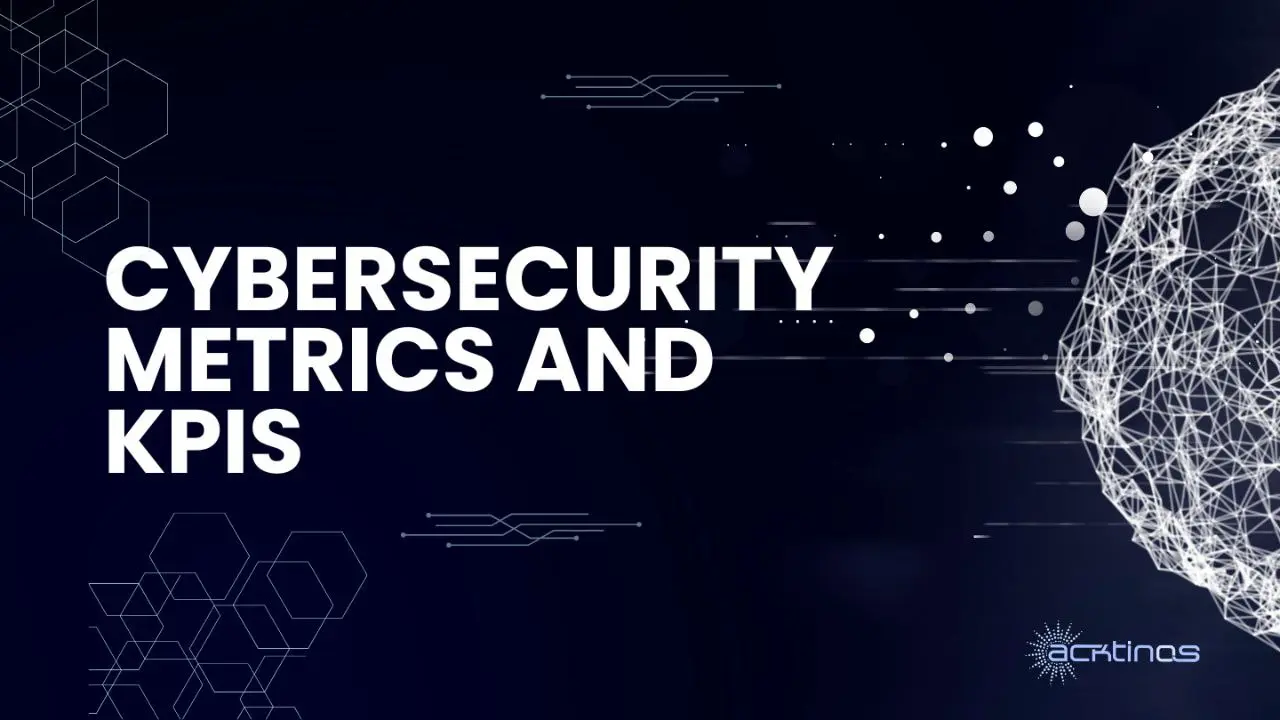Meta: Learn how to measure cybersecurity performance with key metrics and KPIs. Improve threat detection, response, compliance, and overall data protection.
As cybersecurity threats become more frequent, complex, and costly, organizations must move beyond simply implementing firewalls and antivirus software. It’s no longer enough to assume your defenses are effective – you need to measure them.
Related: 5 Common Cybersecurity Mistakes
That’s where cybersecurity metrics and KPIs (Key Performance Indicators) come in. These indicators offer actionable insights into how well your security posture is performing, where vulnerabilities exist, and how to strategically allocate resources.
In this guide, we’ll cover the most essential cybersecurity KPIs, explain how to track them, and provide tips on how to use them to continuously improve your organization’s security maturity.
Consider reaching out to Acktinos for top-notch cybersecurity services to safeguard your organization. They offer tailored solutions to meet your security needs.
Why Tracking Cybersecurity Metrics Matters?
Measuring cybersecurity performance allows businesses to:
- Identify weaknesses early before they become breaches
- Ensure compliance with data privacy and industry regulations
- Demonstrate ROI on cybersecurity investments
- Build accountability across teams and leadership
- Improve incident response and recovery times
Without the right KPIs, businesses are operating in the dark, reacting to threats instead of preventing them.
Related: A Step-by-Step Guide Cybersecurity Audit
Key Cybersecurity Metrics and KPIs to Track
Below are some of the most impactful and commonly tracked cybersecurity metrics for businesses across industries:
1. Mean Time to Detect (MTTD)
What it measures: The average time it takes to detect a security incident after it occurs.
Why it matters: A lower MTTD means your monitoring tools and detection protocols are working effectively. Early detection limits damage.
2. Mean Time to Respond (MTTR)
What it measures: The time between identifying a threat and fully resolving it.
Why it matters: Reducing MTTR can significantly mitigate business disruption and data loss.
3. Number of Detected Incidents
What it measures: Total volume of threats or breaches detected over a defined period.
Why it matters: High numbers may indicate better detection—or a larger vulnerability issue. Trends over time are important.
4. Incident Rate
What it measures: The number of incidents relative to system users, assets, or activity.
Why it matters: Offers a more normalized view of threat exposure across your environment.
5. Percentage of Systems Fully Patched
What it measures: The number of systems with up-to-date security patches installed.
Why it matters: Outdated systems are among the easiest entry points for attackers.
6. Phishing Email Click-Through Rate
What it measures: The percentage of employees who click on simulated phishing emails.
Why it matters: High click-through rates highlight the need for better awareness training.
7. Number of Unresolved Vulnerabilities
What it measures: Open vulnerabilities in your environment that haven’t been patched or mitigated.
Why it matters: Helps you prioritize security efforts and allocate resources effectively.
8. Compliance Score or Audit Results
What it measures: Your alignment with industry standards such as GDPR, HIPAA, or ISO 27001.
Why it matters: Regulatory non-compliance can lead to severe financial and reputational consequences.
9. Data Loss Events
What it measures: Instances of unauthorized or accidental data exposure.
Why it matters: This KPI shows how effective your data protection measures are and whether sensitive information is at risk.
10. User Access Control Violations
What it measures: Unauthorized access attempts or permissions issues.
Why it matters: Proper access control is a fundamental layer of cybersecurity defense.
How to Measure and Report These Metrics?
Tracking cybersecurity makes that data actionable.
1. Use Centralized Dashboards
Cybersecurity platforms like SIEM (Security Information and Event Management) tools can consolidate data from across your environment, providing real-time visibility.
2. Define Clear Benchmarks
Use industry standards, past performance, and risk tolerance to set realistic benchmarks for each KPI. Avoid arbitrary numbers.
3. Align Metrics With Business Goals
Present KPIs in the context of business impact. For example, rather than just showing MTTD, explain how faster detection prevented potential revenue loss.
4. Report Regularly to Stakeholders
Tailor reports for different audiences – technical detail for IT and security teams, strategic summaries for executives.
5. Focus on Trends Over Time
Spotting improvements or declines across quarters or years is more meaningful than isolated metrics.
Related: Cybersecurity and Compliance
Common Mistakes to Avoid
- Tracking too many KPIs: Focus on what matters most for your environment and industry.
- Ignoring user behavior: Many breaches start with human error. Behavioral metrics are just as important as technical ones.
- Failing to act on insights: KPIs only matter if they drive decision-making and continuous improvement.
- Lack of context: A high number of alerts isn’t necessarily bad—what matters is how many are relevant and how quickly they’re handled.
Conclusion: Build a Performance-Driven Security Culture
Cybersecurity is a moving target. Threats change, technologies evolve, and user behaviors shift. By measuring your security performance through meaningful KPIs, you equip your organization to respond faster, plan smarter, and build a security-first culture.
Start by identifying your current gaps. Then build a roadmap using the KPIs that align with your goals, regulatory requirements, and risk tolerance. The more measurable your security efforts are, the more manageable they become.


